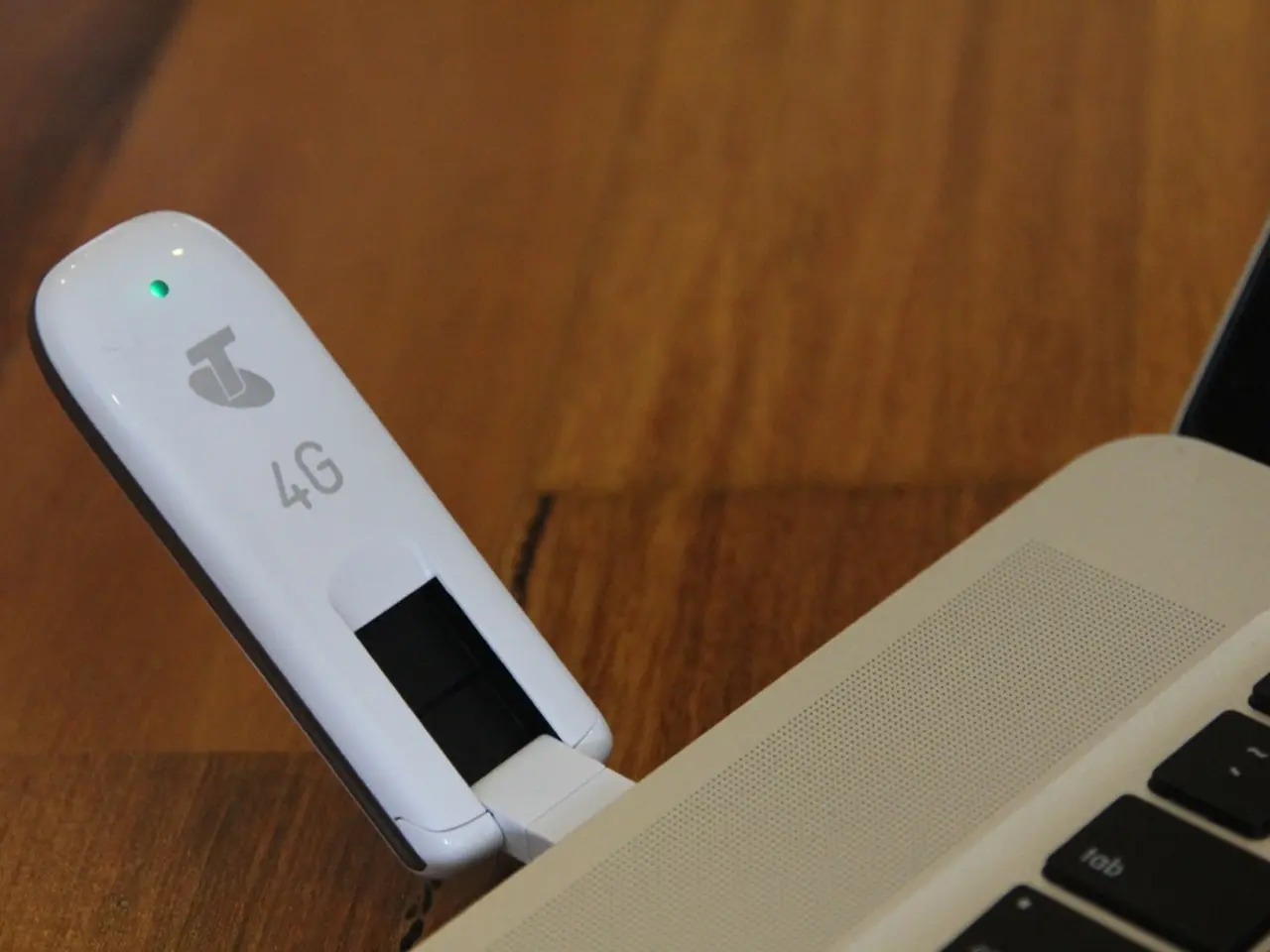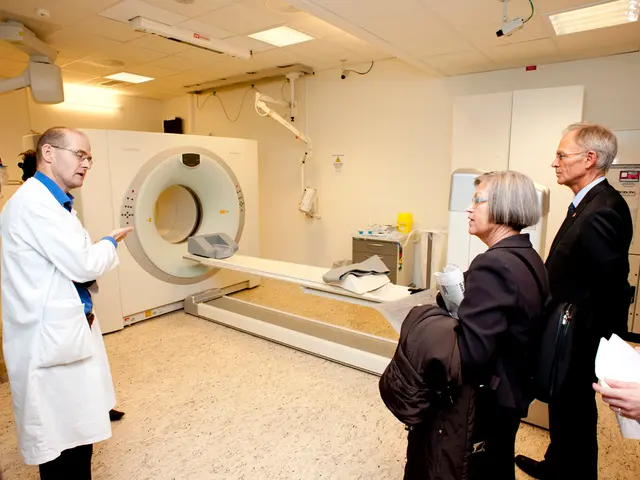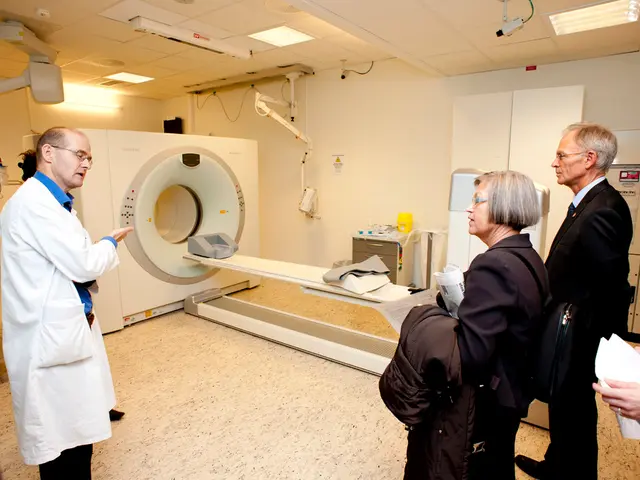Safeguarding Patient Data: Implementing Encryption and Zero Trust Approach
In the rapidly evolving digital landscape of healthcare, the protection of sensitive data from potential threats has become paramount. Gregory and Sickles, industry experts, emphasize the significance of e-discovery and data classification analysis for both structured and unstructured data, particularly in the context of the Internet of Medical Things (IoMT) devices.
The healthcare industry faces a unique challenge in safeguarding data from IoMT devices, which include personal health information (PHI) and personally identifiable information (PII). These data are highly valuable, with healthcare data being 250 times more valuable on the black market compared to payment card data.
To combat these threats, Greenberg suggests a zero-trust strategy, which significantly enhances data protection and access management in healthcare, particularly when handling PHI and PII from IoMT devices.
Key Components of Zero Trust in Healthcare
A zero-trust approach focuses on protecting data first, prioritizing sensitive data like PHI and PII. By adopting a data-centric approach, organizations ensure that even if an unauthorized user gains access to a network, they cannot access sensitive data without authorization.
In a zero-trust model, users are granted the minimum level of access necessary to perform their tasks. This least privilege access approach reduces the risk of unauthorized data access or misuse.
Zero trust also involves continuous verification of identities and least-privilege access to relevant data. This approach reduces the attack surface and potential for attack.
Monitoring and analytics are essential components of zero trust. Real-time monitoring of data access and usage helps detect and respond to potential security threats more effectively.
Integration with HIPAA Compliance
Zero-trust strategies complement HIPAA requirements by ensuring that PHI is protected with additional layers of security beyond the standard HIPAA safeguards. Data anonymization and audit trails and access monitoring are features that are essential in both HIPAA and zero trust.
Benefits for IoMT Devices
The integration of zero trust with IoMT devices offers several benefits. It improves the security posture by continually verifying the identity and integrity of devices, combating the increased vulnerability that IoMT devices introduce to healthcare networks.
Zero trust helps maintain compliance with stringent regulations like HIPAA, mitigating the risk of penalties and fines associated with PHI breaches. It also allows for quicker identification and response to security incidents, reducing potential damage from IoMT-related threats.
In summary, a zero-trust strategy enhances the protection of PHI and PII from IoMT devices by focusing on data security, continuous verification, and monitoring, while aligning with and reinforcing HIPAA compliance requirements.
Security solutions that support zero trust network access can offer secure remote access to data and services according to specific access control policies. Implementing data access management based on zero trust can improve compliance with regulatory requirements and potentially reduce cybersecurity insurance premiums.
Data analytics is underutilized in healthcare, and health systems should focus on understanding data evolution, including data processing and transmission methods. Proper data management requires prewritten data security policies and continuous improvement to address signs of exposed or compromised data.
Zero-trust data access management can improve onboarding and decommissioning of accounts, strengthen operational efficiency, and prevent data loss due to malicious activity. Data access management is a crucial aspect of the zero-trust data pillar, encompassing robust authentication and role-based access control for verifying users and continuously monitoring connections for takeovers or threats.
Matt Sickles, healthcare strategist at CDW Healthcare, calls the data pillar of zero trust a "perfect" approach to examining various types of data and emphasizes the importance of linking metadata to individual identities for network security. Itai Greenberg, chief strategy officer at Check Point Software Technologies, notes that interconnected health data is dynamic and requires a zero-trust policy that doesn't hinder day-to-day operations, possibly aided by artificial intelligence tools.
Peter Newton, senior director of products and solutions at Fortinet, states that the data pillar of the Cybersecurity and Infrastructure Security Agency's Zero Trust Maturity Model involves determining data storage locations, access grants, and data encryption during transfer and storage. Sickles suggests deploying Trusted Platform Management (TPM) for physical protection of health data.
In conclusion, adopting a zero-trust strategy can significantly improve the security and management of sensitive data in the healthcare industry, particularly when handling PHI and PII from IoMT devices. By focusing on data protection, least privilege access, continuous verification, monitoring, and analytics, healthcare organizations can ensure the confidentiality, integrity, and availability of their data, mitigating the risk of data breaches and enhancing overall cybersecurity posture.
- To mitigate the increased vulnerability of IoMT devices and ensure compliance with stringent regulations like HIPAA, it is essential for healthcare organizations to implement zero-trust strategies, continuously verifying the identity and integrity of devices, and monitoring data access and usage.
- In the realm of health and wellness, the integration of zero trust with medical-conditions data collected by IoMT devices offers several benefits, including improved security, enhanced compliance, and quicker response to potential threats, thereby ensuring the confidentiality, integrity, and availability of sensitive data.




